 As the number of digital TV-enabled households continues to rise and the analogue switch off looms ever closer, it seems strange that Sony’s RDR-GXD500 is the first DVD recorder to come equipped with a built-in digital TV tuner.
As the number of digital TV-enabled households continues to rise and the analogue switch off looms ever closer, it seems strange that Sony’s RDR-GXD500 is the first DVD recorder to come equipped with a built-in digital TV tuner.
Over 60% of UK households can now receive digital TV, but trying to record the content can involve nightmarish battles with endless cables and component boxes.
Sony’s RDR-GXD500 is a one-stop solution that’s easy to set up and use, with its all-in-one functionality letting users view Freeview digital channels, make digital recordings and play discs all from a single compact unit.
The included ‘learning’ multi-function remote control lets you jettison your TV remote too, leaving one less thing to have to find on a drunken Saturday night.
Setting up the recorder is a breeze: plug it into your telly, turn it on and then let it automatically scan for channels.
 The unit’s onscreen interface is simplicity itself, with the eight-day electronic programme guide (EPG) banishing those video timer nightmares forever – this puppy is so simple, even a granny overdosed on Christmas sherry would have no problem setting up a recording of Des and Mel.
The unit’s onscreen interface is simplicity itself, with the eight-day electronic programme guide (EPG) banishing those video timer nightmares forever – this puppy is so simple, even a granny overdosed on Christmas sherry would have no problem setting up a recording of Des and Mel.
Selecting programs to record is as simple as clicking on the programme you wish to record from the EPG and that’s it. Easy!
Things look pretty good under the hood too, with the unit sporting high quality components such as a 12-bit/108Mhz DAC and both digital and analogue tuners, allowing you to record one channel while you watch another.
Conveniently, the RDR-GXD500 offers simultaneous record/playback and chase play (this lets you begin watching a recorded programme before it’s finished) as well as a veritable armoury of advanced editing, archiving and organising functions.
In use, the Sony performed flawlessly. Memories of long hours endlessly fast forwarding and rewinding video tapes looking for a programme, were banished forever thanks to the recorder’s indexing and multi speed search facilities.
The digital reception was crisp and sharp and infinitely superior to the vintage On Digital box lurking downstairs. Images were rock solid, the black is Bible black, and the colours are vibrant and richly balanced.
 A range of recording quality modes let you increase recording time at the expense of image quality.
A range of recording quality modes let you increase recording time at the expense of image quality.
The highest setting (HQ) produced copies that were indistinguishable from the original broadcast, although this brought the recording time down to a just over two hours.
With the lowest quality mode, SLP (super long play) time-rich viewers could squeeze in up to six hours of recording with that old school ‘snow storm’ dodgy video feel.
DVD playback was pretty damn good on the machine, with a stable image output providing very little in the way of ‘smearing’ and digital artifacts.
Overall, the Sony RDR-GXD500 gave a consistently good account of itself in all areas, and as such, this is a DVD recorder I can wholeheartedly recommend.
 Highly recommended
Highly recommended


Pros: Great all round performance, integrated digital tuner and simple Cons: The baffling lack of progressive scan video capability
Specifications:
Size (WxHxD): 49x9x38cm
Weight: 5.1kg
Recording formats: DVD-R/-RW, DVD+R/+RW
Playback formats: DVD, DVD-R/-RW, DVD+R/+RW, CD, CD-R/-RW, VCD
Video outputs: Component, SCART (RGB), S-Video, composite, RF
Audio outputs: Line out, optical digital, coaxial digital
Street price: Under £400 (~US$762 ~€591)
Sony RDR-GXD500
 A strong sense of Deja Vu is flowing thick around the Digital-Lifestyles offices today as we hear that ‘Hollywood’ is to take legal action against Real Network for their DVD copying software, RealDVD.
A strong sense of Deja Vu is flowing thick around the Digital-Lifestyles offices today as we hear that ‘Hollywood’ is to take legal action against Real Network for their DVD copying software, RealDVD. Toshiba haven’t given up trying to needle Sony and the rest of the Blu-ray companies.
Toshiba haven’t given up trying to needle Sony and the rest of the Blu-ray companies.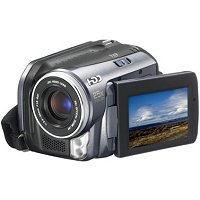 More than four in every five camcorders sold in Europe in 2005 recorded footage to digital tape. However, according to a new industry report from Understanding & Solutions (U&S), digital tape will only account for 14% of the European camcorder market by 2010.
More than four in every five camcorders sold in Europe in 2005 recorded footage to digital tape. However, according to a new industry report from Understanding & Solutions (U&S), digital tape will only account for 14% of the European camcorder market by 2010. “By 2010, DVD will have clearly established itself as the format of choice for mass market consumers, and will account for nearly half of all camcorders shipped,” says Bryant. “This format’s appeal is its ease of use. You can record direct to a DVD and then drop the disc straight into your home player: it makes for a hassle-free workflow system. Couple this with the wide availability of low cost DVD players and you can see its appeal.”
“By 2010, DVD will have clearly established itself as the format of choice for mass market consumers, and will account for nearly half of all camcorders shipped,” says Bryant. “This format’s appeal is its ease of use. You can record direct to a DVD and then drop the disc straight into your home player: it makes for a hassle-free workflow system. Couple this with the wide availability of low cost DVD players and you can see its appeal.”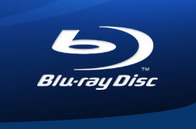 In addition to traditional motivations for video capture, there is an upsurge of consumers who capture video to inform, meet and entertain, primarily via the Internet. The growing global interest in social networking sites such as YouTube and MySpace will squeeze the camcorder market, applying pressure through hybrid ‘still-cams’, digital cameras and mobile phones. In particular, the ever-increasing capacity of flash memory will make these devices a serious future competitor to the camcorder.
In addition to traditional motivations for video capture, there is an upsurge of consumers who capture video to inform, meet and entertain, primarily via the Internet. The growing global interest in social networking sites such as YouTube and MySpace will squeeze the camcorder market, applying pressure through hybrid ‘still-cams’, digital cameras and mobile phones. In particular, the ever-increasing capacity of flash memory will make these devices a serious future competitor to the camcorder. Humax have dished out detailed information about their new dual-tuner, Freeview-enabled PVR, the PVR-9200T.
Humax have dished out detailed information about their new dual-tuner, Freeview-enabled PVR, the PVR-9200T.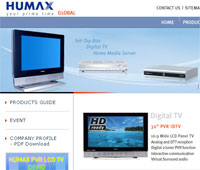 Receiving and recording of pay TV channels is possible through a special CA module.
Receiving and recording of pay TV channels is possible through a special CA module. There’s also a handy USB2.0 port provided for MPEG A/V file transfers between the Duovisio and a PC, letting users play back their digital photos or listen to MP3 files downloaded from a PC.
There’s also a handy USB2.0 port provided for MPEG A/V file transfers between the Duovisio and a PC, letting users play back their digital photos or listen to MP3 files downloaded from a PC. Toshiba has unveiled its new DVD recorder with the handy ability to set up and record TV programmes via email.
Toshiba has unveiled its new DVD recorder with the handy ability to set up and record TV programmes via email.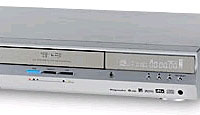 The RD-XS54 comes with Toshiba’s EASY NAVI menu and the TV Guide On Screen Interactive Program Guide for simple, easy-peasy channel navigation and recording scheduling.
The RD-XS54 comes with Toshiba’s EASY NAVI menu and the TV Guide On Screen Interactive Program Guide for simple, easy-peasy channel navigation and recording scheduling. As the number of digital TV-enabled households continues to rise and the
As the number of digital TV-enabled households continues to rise and the  The unit’s onscreen interface is simplicity itself, with the eight-day electronic programme guide (EPG) banishing those video timer nightmares forever – this puppy is so simple, even a granny overdosed on Christmas sherry would have no problem setting up a recording of Des and Mel.
The unit’s onscreen interface is simplicity itself, with the eight-day electronic programme guide (EPG) banishing those video timer nightmares forever – this puppy is so simple, even a granny overdosed on Christmas sherry would have no problem setting up a recording of Des and Mel.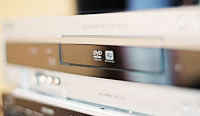 A range of recording quality modes let you increase recording time at the expense of image quality.
A range of recording quality modes let you increase recording time at the expense of image quality.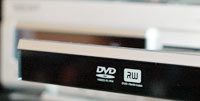 Highly recommended
Highly recommended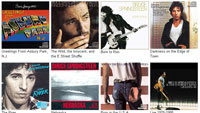 US Record industry honchos will be taking a bigger interest than unusual in the new Springsteen release as they wait to see how the new DualDisc format goes down with Brooooooce fans.
US Record industry honchos will be taking a bigger interest than unusual in the new Springsteen release as they wait to see how the new DualDisc format goes down with Brooooooce fans.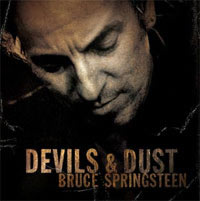 The music business is hoping that the new format – and the extra cash – will help recoup the slice of the retail market lost to piracy and illegal file-sharing. “It’s harder to file-share DVD content and it’s virtually impossible for anyone to burn a DualDisc at home,” purred Thomas Hesse, president of global digital business for Sony BMG.
The music business is hoping that the new format – and the extra cash – will help recoup the slice of the retail market lost to piracy and illegal file-sharing. “It’s harder to file-share DVD content and it’s virtually impossible for anyone to burn a DualDisc at home,” purred Thomas Hesse, president of global digital business for Sony BMG.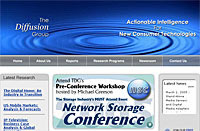 Evidence is beginning to amass that two of the most hyped products in the early digital home market will be lucky if they manage to reach niche market status in the next few years.
Evidence is beginning to amass that two of the most hyped products in the early digital home market will be lucky if they manage to reach niche market status in the next few years. JVC have wheeled out a veritable cavalcade of new, full-featured multi-format DVD recorders, including a series of combination units that combine DVD recording with hard disk drive (HDD), VHS and Mini DV recording.
JVC have wheeled out a veritable cavalcade of new, full-featured multi-format DVD recorders, including a series of combination units that combine DVD recording with hard disk drive (HDD), VHS and Mini DV recording.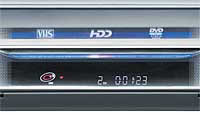 Those with VHS collections chaotically labelled with a load of indecipherable scrawling, may enjoy the auto thumbnail creation feature, which automatically creates video thumbnail chapter references when dubbing to DVD.
Those with VHS collections chaotically labelled with a load of indecipherable scrawling, may enjoy the auto thumbnail creation feature, which automatically creates video thumbnail chapter references when dubbing to DVD.